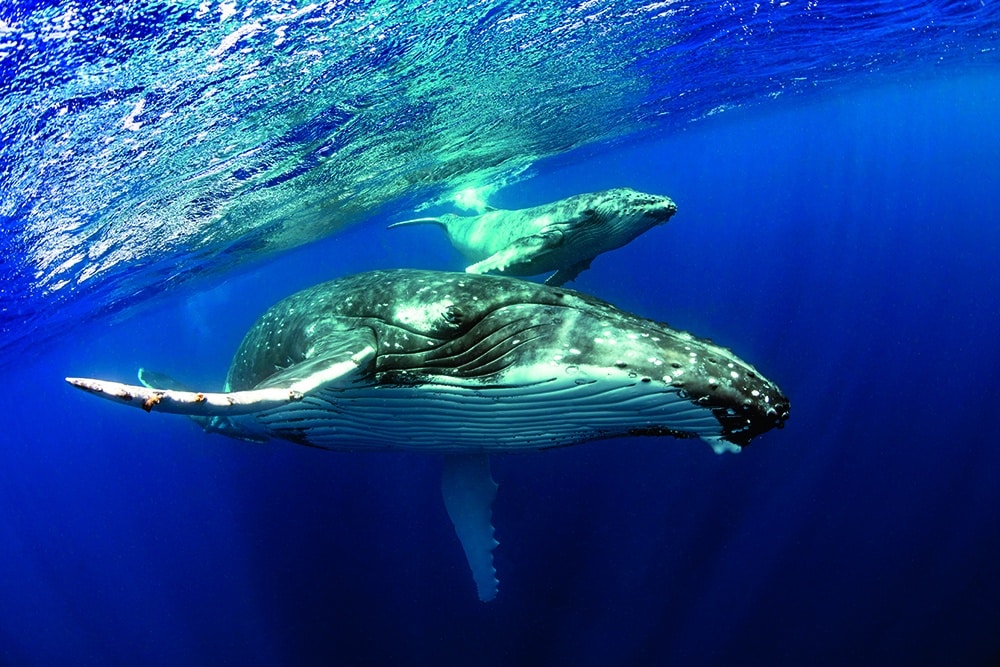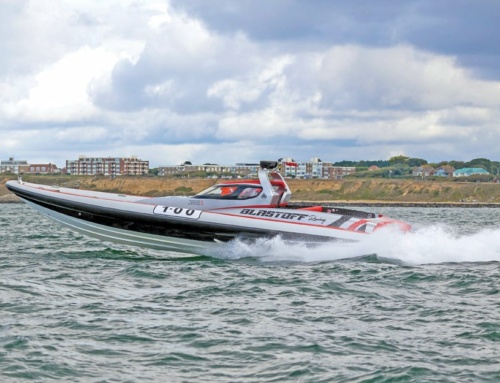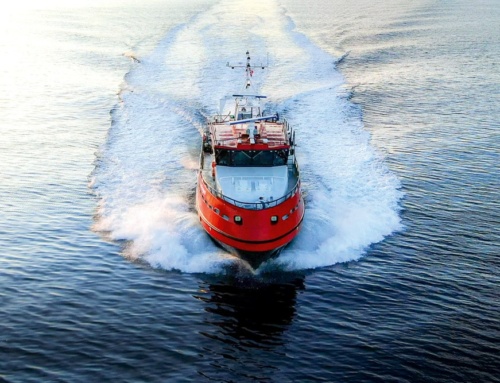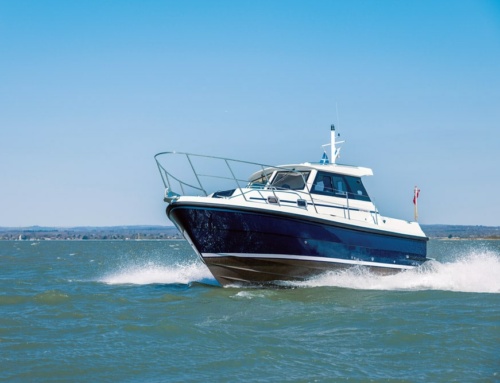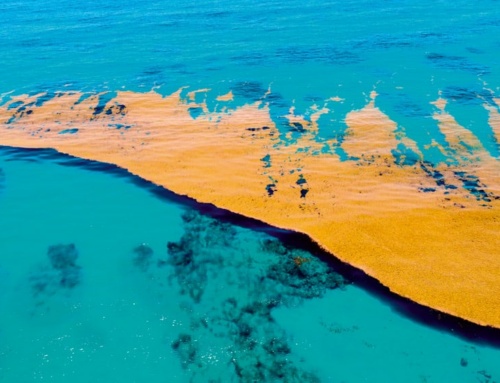Scientists are claiming that the effect of noise pollution on cetaceans and other marine life is like the ‘death of a thousand cuts’. Marine biologist and wildlife expert Giovanna Fasanelli investigates …
Humans are not the only animals out there that love to update their social status or take pictures of their food! Indeed, the science of broadcasting personal information out into the ether has been conducted for much longer than we’ve been tinkering with radio waves and satellites – by creatures that came long, long before us. And for a planet that is three-quarters seawater, a great deal of the world’s biological communication is happening underwater using that marvellous form of energy, sound. While there are some creatures that dominate the sound stage, there is another that threatens to overwhelm it all.
The order Cetacea comprises the world’s 90-odd species of whale, dolphin and porpoise. They are master mariners proficiently moving through expansive, featureless tracts of open ocean while finding not only their way but also their food and their families, as well as constantly listening out for danger. The production and receiving of sound information is paramount to their survival, they possess some nifty sound gear that would have 007’s ‘Q’ licking his engineering lips. But the way whales produce and receive sound depends a great deal on whether they are a toothed whale (the suborder Odontoceti) or a filter-feeding baleen whale (Mysticeti).
Baleen whales
The wonderful thing about underwater sound is that it travels, on average, more than four times faster in seawater than in air (due to water’s greater density), and low-frequency sounds produce long wavelengths, which encounter fewer interfering particles and thus can travel huge distances. This suits baleen whales very well as they are prodigious swimmers – indeed, the humpback whale is the current mammal migration record holder, clocking nearly 10,000 kilometres in a single direction. Connecting with one’s mates over vast swathes of sea requires the ability to cast out, and receive, very loud (+/-180dB) and very long-ranging messages. Simply put, they make these signals using a larynx and a laryngeal sac, which together produce and amplify sound vibrations, making them low and loud enough to travel across ocean basins. In general, the moans, groans, grunts, thumps and knocks that baleen whales produce are emitted within the low-frequency range, often at levels inaudible to the human ear. They are also capable of chirps, whistles, cries and songs that reach higher-frequency notes, the best-known ‘singers’ being the vociferous male humpback whales whose complex and haunting love songs can go on for hours and reach up to 8000Hz.
https://baleinesendirect.org/en/what-is-a-laryngeal-sac/]
Toothed whales
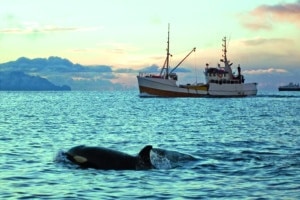
Orca – with fishing vessels in close range.iStock – Seth Akan
In comparison to baleen whales, toothed whales [Ed’s Note: toothed whales (also called odontocetes, systematic name Odontoceti) are a parvorder of cetaceans that includes dolphins, porpoises, and all other whales possessing teeth, such as the beaked whales and sperm whales.] have an ability to produce sounds not only for use in social communication and navigation (using whistles and burst pulses) but in a way that allows them to take ‘pictures’ of the world around them, including what is on the dinner menu (using echolocation click trains). Air is moved through dedicated nasal passages in the head, forming clicks as it passes through the ‘phonic lips’, which act a bit like castanets. These clicks are then directed through that famous fat-filled organ known as the ‘melon’ that focuses the vibrations into a beam like a flashlight, but for sound waves. Using these specialised tissues, a wide variety of sound vibrations can be propagated to varying distances according to the animal’s desires. The highly focused beams of clicks produced for purposes of echolocation (also known as ‘biosonar’) are an incredible information-gathering system that allows the animal to ‘see’ with sound, which is especially useful when much of the time the seawater is murky or dimly lit, if not pitch dark. The returning echoes of their ‘click trains’ are received by fatty tissue in the lower jaw, which then transfers information via the inner ears to the brain, giving them a mental image of their forward-facing view. The accuracy of this sonic scanner is simply astounding, allowing the whale or dolphin to determine characteristics such as the shape, size, speed, distance and direction of the target, as well as aspects of the internal structure that can even reveal the difference between preferred prey species. By scanning objects with high-frequency biosonar, a dolphin can differentiate a ping pong ball from a golf ball based solely on the density differentials!
Acoustic assault
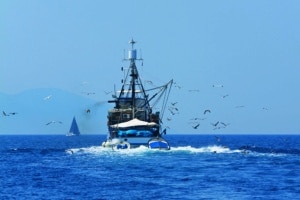
Commercial fishing vessel © GasPR13 Mediterranean style trawler followed by sea gulls
At this point we notice the elephant in the room, looming large. With the ocean serving as one colossal cathedral for biological sound transmission, the countless and expanding activities of humans within this sacred space are tantamount to an all-out acoustic assault. As the oceans transform into a web of criss-crossed, industrialised superhighways and construction sites, scientists are stating that the issue of noise pollution is as threatening to the health of the oceans as climate change and overfishing. Indeed, the oceans are said to be 10 times noisier than they were 50 years ago, and just how this is ultimately going to affect food webs is grossly understudied and of pressing urgency.
The harm
So what are the rightful residents of the ocean having to contend with? The major culprits are the usual suspects, namely military sonar and seismic surveys – both activities that have been strongly associated with mass strandings of cetaceans. All over the world, countless seismic air guns are continually being deployed in the search for new subsea oil fields, releasing ‘sound bombs’ (240dB or more) every 10 seconds, each detonation louder than a 747 at take-off, detectable up to 2,500 miles away. Depending on their proximity, these blasts can not only take out a whale’s hearing system or result in significant tissue haemorrhaging but can cause outright death or extreme changes in behaviour that may involve fleeing prime feeding and breeding areas – or disorientated and panicked animals may shoot to the surface, potentially bringing on grave effects from decompression sickness. Temporary and permanent shifts in hearing thresholds have also been reported as an effect following exposure to such incredible and consistent noises. These days, industrial and recreational shipping traffic infiltrates just about every region of our ocean, as does an ever-increasing commercial fishing fleet, now covering 55% of the world’s sea. This drastic encroachment has whittled the ‘untouched ocean wilderness’ down to merely 13% – and it is shrinking every year. Imagine being expected to carry out daily life with bombs dropping every few seconds, loudspeakers continually shouting messages, and constant interference from cellphone and television signals. Life would be untenable, which is why those humans who are currently living through similar conditions in the war-torn countries of the Middle East are so desperate to escape this living hell. Acoustic habitat loss is becoming an extremely serious issue for much of the marine world, and we all need to know about it.

The five F-1 engines on the rear of a Saturn V rocket on display at the Kennedy Space Center in Florida – sperm whale is louder! ©Jen Takes Pictures.
Every fishing vessel, small and large, is fitted with depth sounders and fish finders, utilising an average high-frequency range that falls between 15 and 200 KHz. This overlaps with the same radio stations that many cetaceans are using to carry out their lives. Added to revving engines, jet skis and a myriad of other anthropogenic sounds, we have a phenomenon known as ‘auditory masking’: when an intended signal is rendered inaudible by another unwanted source of sound present throughout the signal. Think of the difficulty posed by a crossed-line phone call and one may get a sense of what it must be like for a nearby dolphin or whale, especially when many vessels are concentrated within a small area such as a shipping lane. Auditory masking obscures biological communication channels and is one of the concerning long-term effects of noise pollution as a whole. Effects on cetaceans’ prey species represent another level of this issue that is still being researched, but lowered catch rates, declines in abundance and elevated stress hormones are showing up as just a few of the associated impacts.
Technologies that address that age-old issue of marine biofouling are beginning to turn away from toxic biocides and plastic coatings towards biomimicry and sonic disruptors. Acoustic antifouling systems utilise transducers that emit ultrasonic frequencies high enough to cause localised microscopic cavitations in the water, which rupture single-celled algae, the kick-starters of the fouling food chain. These mounted transducers, of which there may be multiple to sufficiently cover the extent of the boat’s subsurface area, render the hull a giant loudspeaker blasting microscopic organisms within a roughly 30-foot radius and at frequencies within the hearing range of many toothed-whale species. While this may well be preferable to ‘death by chemicals’, and the range of propagation of these high frequencies is indeed restricted, what of the cumulative effect of wide-scale deployment of this tech, layered with the other signals being transmitted by other devices on board? It is absolutely clear that thorough investigation is needed to determine just how this seemingly harmless use of acoustics would alter ecosystems on both micro and macro scales.
Conclusion
‘Undersea noise pollution is like the death of a thousand cuts … That high level of noise is bound to have a hard, sweeping impact on life in the sea’ (Dr Sylvia Earle, oceanographer, marine botanist, ecologist, writer and former Chief Scientist at the United States National Oceanic and Atmospheric Administration (NOAA)).
The ocean soundscape is precious to life on earth. It is the connective tissue that binds not only the lives of cetaceans but almost every single interface of the marine ecosystem. There is much to know about how our acoustic technologies are impacting life in the sea, and acquiring those answers is not always easy, but we cannot afford to get it wrong any longer. Currently products make it to market long before researchers have had time to fully observe how they may affect the myriad of ancient species with whom we as seagoers share these sacred frequencies. Let’s change that.
The ‘secret radio station’
Baleen whales have figured out a physics hack that radically assists their low-frequency calls to travel such vast distances across oceans and it’s called the ‘deep sound channel’, also known as the ‘SOFAR’ (SOund Fixing And Ranging) channel. At varying depths, depending on latitude, there exists an invisible tunnel where the speed of sound increases due to a lack of disturbance to the sound waves. Due to the law of refraction and specific parameters of temperature and pressure, low-frequency acoustic signals generated in this sound tunnel become effectively trapped and left to propagate for thousands of miles without losing signal strength. Whales are believed to knowingly cast out their messages at these depths – a fin whale’s call will travel 250 kilometres at the surface but 6,000 kilometres within this channel.
A few pointers
Sound is a function of both frequency (hertz or cycles per second: 1000Hz = 1KHz) and the ‘loudness’ or intensity output (a logarithmic unit measured at the source in decibels (dB)).
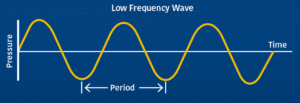
Low-frequency sound waves range between 0 and 500 Hz (C5 on a piano).
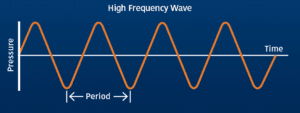
High-frequency sound waves range from 2000Hz (C7 on a piano) and upwards.
A xylophone covers a mid-frequency range of roughly 500 to 2000 Hz.
Human hearing ranges between 20 and 20,000 Hz. Below that is classed as infrasound and above is ultrasound.
Cetaceans as a group have an extremely broad hearing threshold of 5 to 200 KHz.
Baleen whales are tuned for low-frequency communications (which travel further, as their longer wavelengths are better able to penetrate the water), while toothed whales are specialists at much higher frequencies used for communicating and biosonar scanning (these shorter wavelengths cram much more data into the same length of transmission, allowing higher-resolution ‘pictures’).
The loudest biological sound is produced by a sperm whale – the communicative clicks have been measured at 230dB, though this signal only lasts for microseconds. For comparison, while air and water transmit vibration very differently, a dragster with a 7000hp nitroglycerin-fuelled engine puts out 163dB. The launch of NASA’s Saturn V rocket produced sounds that measured 220dB, which is sufficient force to melt nearby concrete and set grass on fire a mile away.
Other links of interest
dolphin ‘scarf’: https://www.youtube.com/watch?v=gbYjM1KlFrE
dolphin clicking: https://www.youtube.com/watch?v=28Ap4ove3Fg
sonic sea trailer: https://www.youtube.com/watch?v=T-jabL64UZE&t=117s
The ocean soundscape is precious to life on earth.
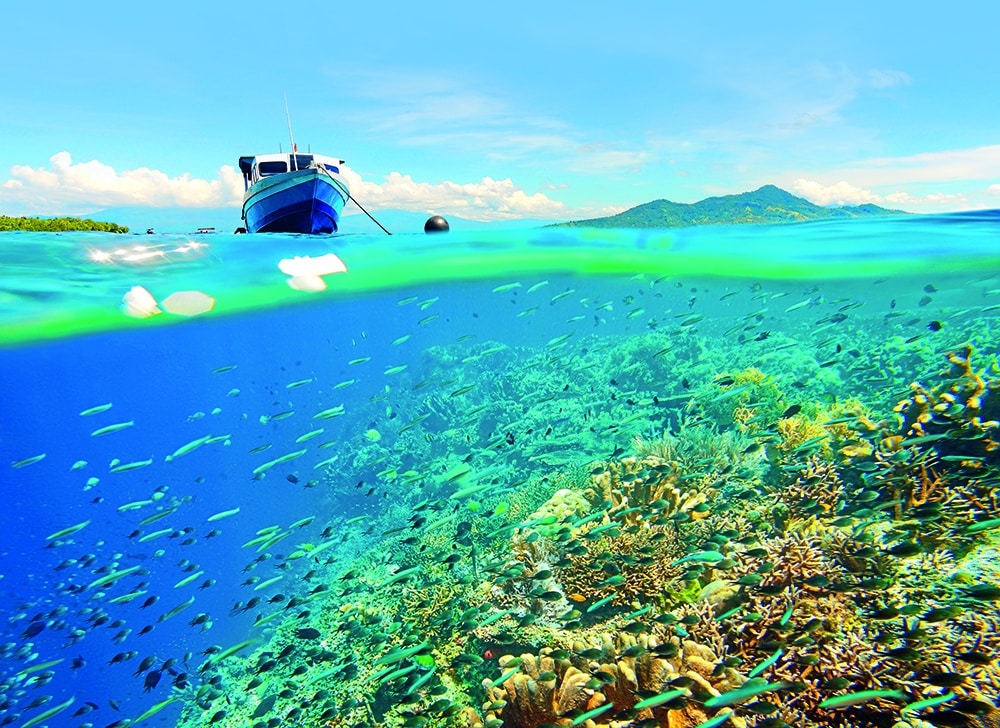
Beautiful Coral reef near tropical island of Sulawesi, Indonesia under and above water.

